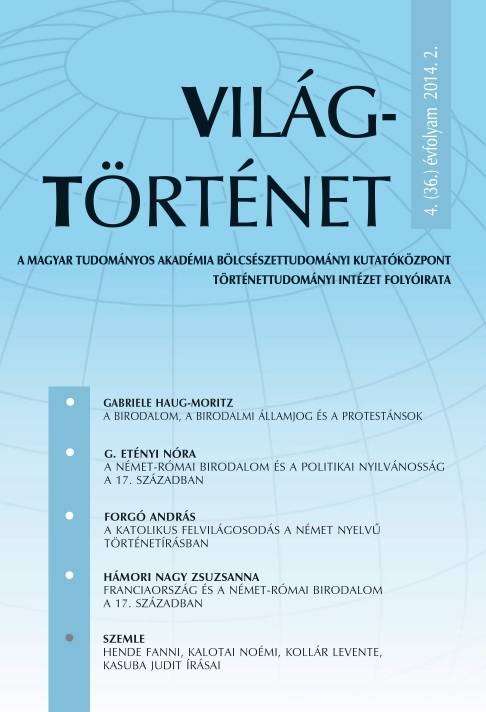A Német-római Birodalom és a politikai nyilvánosság a 17. században
Publicity of the Holy Roman Empire in the 17th Century
Author(s): Nóra G. EtényiSubject(s): Media studies, 17th Century
Published by: Magyar Tudományos Akadémia Bölcsészettudományi Kutatóközpont Történettudományi Intézet
Keywords: German-Roman Empire; media-system; 17th century; wartime newspapers; weekly publications
Summary/Abstract: The article is based on the author’s latest research results on the explosion of information in the 17th century and tries to answer the question how the media-system was formed in the German-Roman Empire. The German-speaking political publicity was special in the early modern Europe, for several political and economic centres, courts had effective influence on it. Its receptive audience was very wide-range, well-structured including regal courts and imperial cities as well. During wartime newspapers, weekly publications, printed reports and broadsheets illustrated with engravings were able to publish a great number of international news, transmit political norms, encourage cohesion by forming a virtual international publicity in Europe. The collections of the 17th century aristocrats and rich town-dwellers prove that the printed information had a great value and high prestige (beside the handwritten forms of information). The well-structured genre system of the 17th century media published a detailed and substantive image of Hungarian Kingdom with its real political, economic and military situation. Though this system was influenced by several political interests (e.g. interest of the Emperor, the electors, the prince), the Hungarian political and cultural elite was able to build legal and informal pathways of communication to represent the interest of the Hungarian aristocracy
Journal: Világtörténet
- Issue Year: 2014
- Issue No: 2
- Page Range: 203-237
- Page Count: 35
- Language: Hungarian

